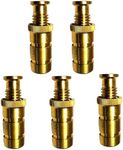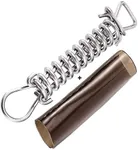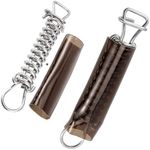Buying Guide for the Best Pool Solar Covers
Choosing the right pool solar cover can make a big difference in keeping your pool warm, reducing water evaporation, and saving on energy costs. The main goal of a solar cover is to trap the sun’s heat and transfer it to your pool water, while also acting as a barrier to keep debris out. When shopping for a solar cover, it’s important to understand the key features that affect performance and ease of use, so you can select the best fit for your pool and your needs.Material ThicknessMaterial thickness refers to how thick the solar cover is, usually measured in mils (thousandths of an inch). Thicker covers (like 12-16 mil) are more durable and provide better heat retention, but they can be heavier and harder to handle. Thinner covers (8-10 mil) are lighter and easier to put on and take off, but may not last as long or retain as much heat. If you want a balance between ease of use and durability, a medium thickness is a good choice. If you prioritize longevity and maximum heat retention, go for a thicker cover.
Cover Size and ShapeThe size and shape of the cover should match your pool as closely as possible. Solar covers come in standard shapes like rectangle, oval, and round, but can also be trimmed to fit irregular pools. A cover that fits well will be more effective at trapping heat and preventing debris from entering. Measure your pool carefully and choose a cover that is slightly larger, so you can trim it for a perfect fit. If you have a custom-shaped pool, look for covers that are easy to cut.
Bubble DesignThe bubble design refers to the small air pockets on the underside of the cover. These bubbles help trap heat from the sun and transfer it to the water. Larger, more pronounced bubbles can improve heat retention, while smaller bubbles may make the cover more flexible and easier to handle. If you want maximum heating efficiency, look for covers with larger, well-formed bubbles. If you value flexibility and ease of storage, smaller bubbles might be preferable.
UV ResistanceUV resistance is the cover’s ability to withstand damage from sunlight over time. A cover with good UV resistance will last longer and maintain its effectiveness, even after long exposure to the sun. This is important because solar covers are constantly exposed to sunlight. Look for covers that specifically mention UV protection or resistance, especially if you live in a sunny climate or plan to leave the cover on for extended periods.
Ease of HandlingEase of handling refers to how simple it is to put the cover on and take it off your pool. Heavier, thicker covers can be more cumbersome, while lighter ones are easier to manage. Some covers are compatible with reels, which make handling much easier, especially for larger pools. If you plan to remove and replace the cover frequently, consider how much effort you’re willing to put in and whether you might want to invest in a reel system.

















